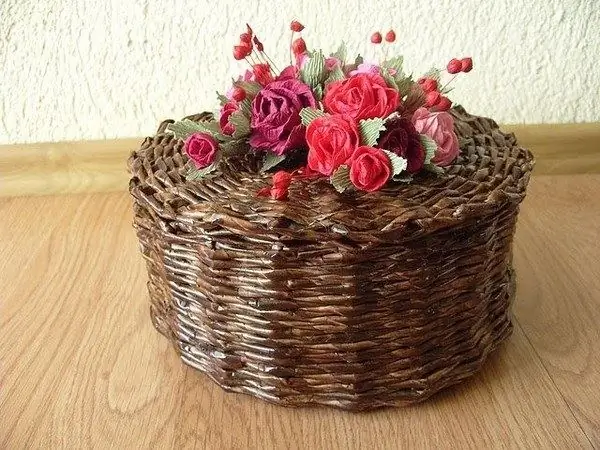The art of weaving has been known for a long time. Most often, the masters used willow and grape branches for their creations. But it is not so easy for modern residents of megalopolises to find a real vine, and preparing it for work is a very laborious process. Therefore, now weaving from a paper vine is gaining more and more popularity.

Any type of paper is suitable for the manufacture of such a vine: newsprint, office, book and magazine, packaging. But more preference is given to weaving from newspapers, which is due to the availability and cheapness of such material. In addition, newsprint is soft and easy to weave.
What can be woven out of paper?
Newspapers can be used to weave baskets, vases, pots, trays and even furniture! There are several main types of paper weaving: simple, openwork, braided, folded, chintz and others. For example, plain calico weave is great for rectangular boxes. Also, this method is easy to perform and is suitable for novice craftsmen. But to create a basket or vase, a fold pattern is more suitable. But you can combine several weaving options at the same time, thereby increasing the strength of your thing. Another reason why many craftswomen prefer this type of needlework is the minimum set of additional tools. In addition to a pile of old newspapers, this kind of creativity will require scissors, glue and a knitting needle or any other round stick.
Stages of paper weaving
The initial stage of weaving is the preparation of the tubes. To do this, the paper is cut into identical strips. The width of the strip is usually 4-6 cm. Then, a knitting needle is applied to the long side of the resulting strip at an angle of 30-45 degrees and the paper is wound tightly in a spiral. When the tube is almost ready, its tip is glued and the needle is carefully taken out. You need to twist the tube so that one tip is slightly wider than the other, so that when connected they can be inserted into each other. The next tube is made in the same way.
Having wound a sufficient amount of paper vine, you can start the weaving process, according to a previously selected pattern. Another stage of paper weaving is dyeing. Many craftswomen prefer to dye the tubes before weaving, and some after. To give one color or another, water-based stains, acrylic paints, food or synthetic dyes are most often used. Finishing with varnish will help extend the life of the wicker craft. And originality can be added with the help of decorative elements.
By creating unique masterpieces using the technique of paper weaving, you can easily decorate your house with unique, necessary gizmos, as well as please your friends with a gorgeous hand-made gift.






